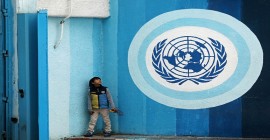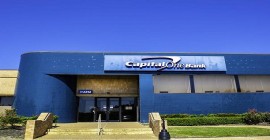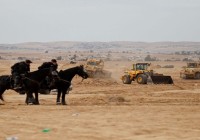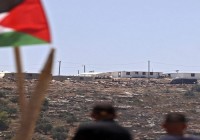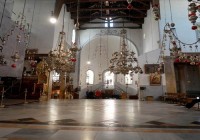Survey: Poverty Rate Among Palestinian Refugees in Lebanon Reaches 65%
According to a survey conducted by the American University of Beirut and UNRWA, some 495,985 Palestine refugees are registered with UNRWA in Lebanon. However, it is estimated that the actual number of Palestine refugees who still reside in the country ranges between 260,000 and 280,000. The survey spanned the 12 refugee camps and areas outside the camps in Lebanon and included 2,974 Palestine Refugees in Lebanon (PRL) households and 1,050 Palestine Refugees from Syria living in Lebanon (PRS) households.
The study is all the more important as it documents the situation of over 42,000 Palestine refugees from Syria living in Lebanon (PRS) at the time of the survey. As such, the report covers the situation of all Palestine refugees residing in Lebanon regardless of their time of entry, their registration status with UNRWA and their legal status vis-à-vis the Lebanese authorities.
On average, the PRS population, with a mean age of 25.6 years, is five years younger than the PRL population. PRS also account for bigger households than PRL at 5.6, compared to 4.5 household members for PRL. The average age of the PRS household head is 46, younger than the average age of the head of a PRL household, at 55.
The scale and depth of the data in the report are intended to inform programs and policies for improving the living conditions and livelihoods of PRL and PRS.
Money-metric Poverty
While extreme poverty rates have halved for PRL since 2010 from 6.6 per cent to 3.1 per cent, general poverty rates have remained the same over the past five years at 65 per cent. This drop in extreme poverty is worth investigating in future studies to help shed light on the reduced rate. There are, however, variations in these poverty dynamics among the various regions. General poverty rates have declined slightly in south Lebanon, but they have slightly increased in NLA, Beqaa and CLA. Poverty levels in Saida have dropped by 8 per cent. In addition, Tyre has also witnessed a 9 per cent drop in poverty rates. However, poverty has increased in NLA by 11 per cent, in CLA by 9 per cent and the Beqaa by 2 per cent. Poverty affects young refugees most, with 74 per cent of adolescents living in poverty, and 5 per cent living in extreme poverty. An even larger proportion of PRS are poor. Nine per cent are extremely poor (3,500 are estimated to be unable to meet essential food requirements); while 89.1 per cent are generally poor (35,000 could not meet their basic food and non-food needs). Both extreme and overall poverty rates are higher inside the camps than out. In the NLA and the Beqaa, areas adjacent to Syria, poverty levels are at 94.1 per cent for PRS. PRS poverty is lowest in CLA at 77 per cent. Extreme poverty incidence in NLA is 15.6 per cent while it is 11.3 per cent in the Beqaa. Providing PRS with economic opportunities is extremely important to lift them out of poverty, even if these opportunities are provided through the informal economy. PRL monthly per-capita spending is under half the average spending of the Lebanese, at US$ 195 compared to US$ 4294 , respectively. PRS monthly per capita spending is even lower than PRL at US$ 140.
Education
Educational attainment and decent employment opportunities are protective against poverty. Higher educational attainment and higher attendance rates, for both PRL and PRS, correlate with higher spending. It is worth noting that PRL educational enrolment is particularly high, especially at the elementary level. Secondary level enrolment has increased for PRL since 2010 from 51.1 to 61.2 per cent. PRS have a lower enrolment rate than PRL, and the reasons for non-enrolment range from distance from schools and universities, to restrictions on mobility, and a lack of means to purchase school supplies. PRL and PRS enrolment rates vary by educational cycle. While PRL enrolment is close to 97.2 per cent in elementary, 84.2 per cent in preparatory and 61.2 per cent in secondary schools, PRS enrolment is 88.3, 69.6 and 35.8 per cent for the same respective cycles respectively for the same year. PRS enrolment is significantly higher for camp residents (93.7 per cent) compared to students residing in areas outside the camps (82.6 per cent), indicating the negative impact that restrictions on movement and a lack of access to means of transportation may have on children accessing education outside of camps.
Labour Market Outcomes
Another factor that ties into PRL and PRS poverty is unemployment. The PRL unemployment rate stands at 23 per cent (a significant increase from the 2010 rate of 8 per cent); this rate is around 31 per cent for women. The PRS unemployment rate, in comparison, is at an alarming 52.5 per cent, 48.5 per cent for men and a staggering 68.1 per cent for women. Around 80 per cent of employed PRL are self-employed and wage labourers. The main source of income for PRL is self employment at 41 per cent, followed by wage labour at 37.8 per cent, and UNRWA assistance through the SSN programme at 33.5 per cent. Not only are PRL and PRS struggling with unemployment, the majority of those who are employed work in low-paying, low-skilled jobs that are more often than not subject to harsh, exploitive and insecure working conditions. For instance, 53.4 per cent of the employed PRS are paid on a daily basis, while the vast majority (97.7 per cent) only have verbal agreements with their employers, meaning that employment could be terminated at any time without notice. Moreover, 98.2 per cent do not have sick or annual leave. All professions, except the senior 'white collar’ occupations,5 show poverty rates higher than 50 per cent, reflecting the low pay and precarious work conditions PRL still experience.
Health
PRL and PRS health conditions and access to health services are highly dependent on UNRWA services. An almost unanimous count responded that they have access to UNRWA health services. 81.3 per cent of PRL report at least one family member suffering from a chronic illness. That rate is 83 per cent among PRS households. Sixty-three per cent of PRL respondents and 75 per cent of PRS respondents report at least one household member who suffered from an acute illness in the past six months. Both PRL and PRS reported 10 per cent who suffer from a disability. Both PRL and PRS health conditions improve with increasing educational attainment and employment levels.
Food Security
Overall, food insecurity levels of PRL are similar to 2010. While overall (moderate and severe) food insecurity prevalence rates are almost unchanged from the 2010 survey (61.5 per cent in 2010 compared to 62.2 per cent in 2015), there is a four percentage-point increase in severe food insecurity, with a corresponding decrease in households classified as moderately food insecure. Among PRL, 38 per cent reported being food secure, 38 per cent moderately food insecure and 24 per cent severely food insecure. An alarming 27 per cent of PRL children live in severely food insecure households. PRS have been found to be far more vulnerable: a mere 6 per cent are food secure, and 63 per cent are classified as moderately food insecure. Among PRL, 38 per cent reported being food secure, 38 per cent moderately food insecure and 24 per cent severely food insecure. An alarming 27 per cent of PRL children live in severely food insecure households. PRS have been found to be far more vulnerable: a mere 6 per cent are food secure, and 63 per cent are.
Conditions of the Dwelling
While the majority of both PRL (84 per cent) and PRS (79 per cent) have access to potable water, their housing conditions are still considered poor. Houses suffer from a lack of maintenance, power supply, proper sewage networks and waste disposal, and homes are damp and suffer from water leakages. These conditions are predominant among both PRL and PRS living in camps across Lebanon. While 46 per cent of PRS report living in overcrowded conditions, the number is much lower at 9 per cent for PRL. Seventy eight per cent of PRL households complain from dampness in their dwelling, 62 per cent of houses suffer both PRL and PRS living in camps across Lebanon. While 46 per cent of PRS report living in overcrowded conditions, the number is much lower at 9 per cent for PRL. Seventy eight per cent of PRL households complain from dampness in their dwelling, 62 per cent of houses suffer.
Security
PRS live in constant fear of deportation which is associated with significantly lower school enrolment for non-camp students compared to camp residents and PRL. Around 60.6 per cent of PRS fear being deported (in the Beqaa, 83.3 per cent fear deportation), and 67.8 per cent report being concerned for their family’s safety (85.5 per cent in the NLA). Furthermore, 57.1 per cent of PRS report feeling insecure due to the physical and social environment around them (70.1 per cent in CLA and the Beqaa).
Multidimensional Poverty
Finally, regardless of the region, camp, or population group (PRL or PRS), a respondent’s living conditions, their overall well-being and sense of security improve when they have decent opportunities of employment and advanced educational attainment. Using a multidimensional poverty index that includes education and employment in addition to expenditures, around a quarter of PRL are poor, compared to 64 per cent of PRS. Any policy that ties into improving labour market access, work conditions and employment opportunities and increasing education enrolment and the quality of education across the various educational cycles and levels will serve both PRL and PRS mental, physical and financial interests.

